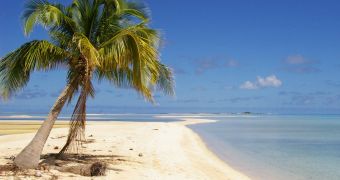After one year of hard work, you would like to spend your holidays lazing on a tropical beach, relaxing in the shadow of a coconut tree, refreshing with a coconut... It is the symbol of the tropics and one of the most popular crops, but as the coconut (Cocos nucifera L.) is practically found now everywhere in the tropics and it has been so for a long time, it seems difficult to detect how the coconut was domesticated and dispersed around the world.
This is exactly the task of a team made by Dr. Kenneth Olsen, Washington University in St. Louis assistant professor of biology in Arts & Sciences and Bee Gunn, a research specialist at the Missouri Botanical Garden, who will use genetics for this purpose. Olsen has received a $20,000 grant from the National Geographic Society to study the coconut's DNA.
"The coconut played a crucial role in the history of human exploration and dispersal across the tropics, and it continues to play a fundamental role in human societies today. As a portable source of nutrition and water, the coconut was critical for humans to be able to voyage, establish trade routes, and colonize lands in the Pacific Rim, coastal India, Africa and South America. Our preliminary DNA sequence data show genetic variation within the coconut, and this is key to delineating historical relationships among different populations." said Olsen.
"Fossil data indicate that the coconut underwent an ancient dispersal event that predates human activity. This early dispersal is expected to have created a genetic signature that can be traced by examining the genetic structure of plants sampled across the species range. Superimposed on this ancient 'phylogeographic' structure is the more recent history of human dispersal, cultivation and domestication. Existing genetic data, while limited, suggest that the most highly domesticated 'Dwarf' form, grown worldwide is most closely related to Pacific populations," Olsen continued.
This palm has myriad uses, from the nut used in human alimentation to the leaves and wood used as a building material and fuel in the tropics.
"Every part of the plant is used, and recently coconut oil has been manufactured into biodiesel in the Pacific (more specifically, Vanuatu). More than 11 million hectares (one hectare is equal to 2.47 acres) are now planted in coconut in 86 tropical countries." Olsen said.
Olsen will investigate the ancient dispersal, the geographical origin(s) of domestication, the human impact on homogenizing population DNA across the species range and the location of the possible wild progenitor populations.

 14 DAY TRIAL //
14 DAY TRIAL //